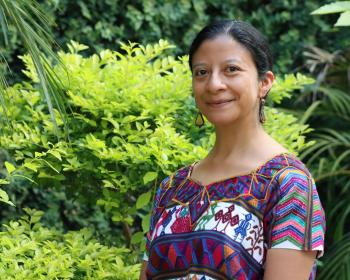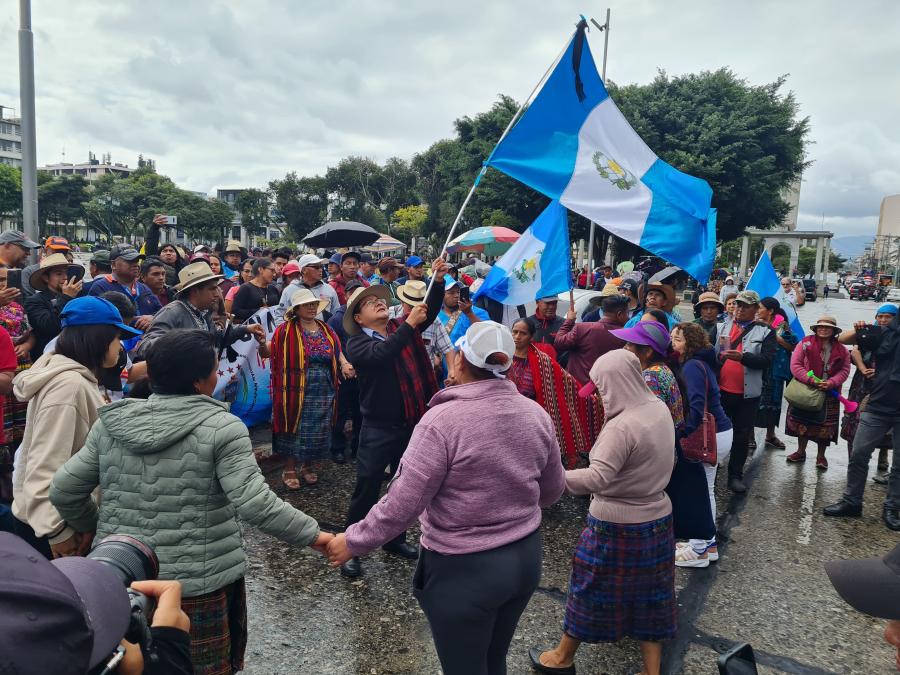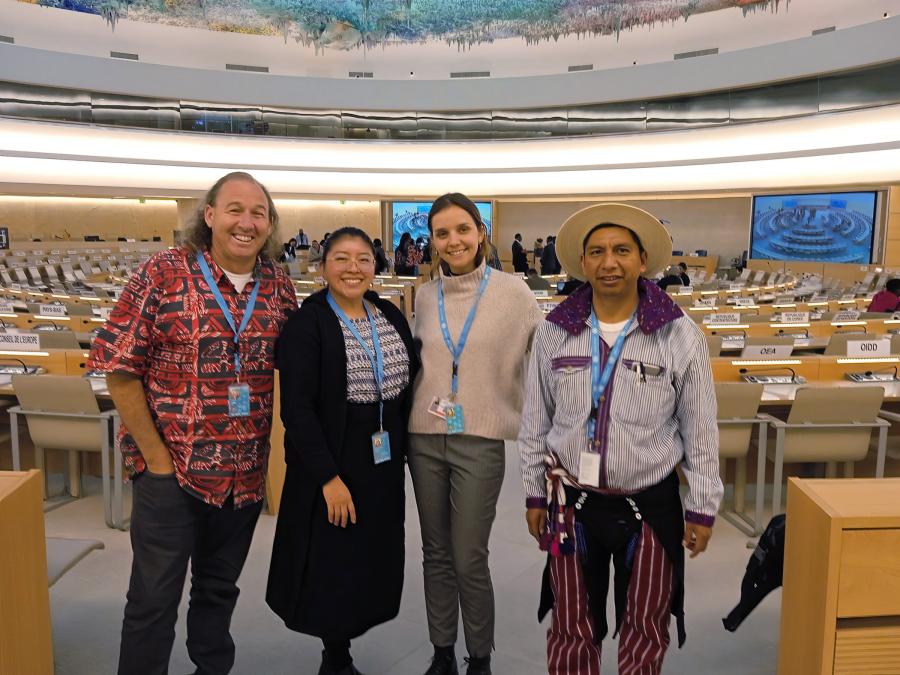Guatemalan Indians have responded to population growth in ways that conflict with the role the state has assigned them.
Most countries in Latin America, in the course of the present century, have experienced what is commonly known as a "population explosion." However, many of these same countries, four centuries ago, underwent a "population collapse" the severity of which, viewed in aggregate, probably exceeded any demographic disaster ever recorded by history. Neither the ravages of the Black Death in fourteenth-century Europe nor the forty million deaths expected to occur worldwide through hunger in 1985 approach the magnitude of Amerindian mortality following the Old World's enduring first encounter with the New. Spanish missionaries who witnessed their native charges perish from what one clergyman diagnosed as "God's secret judgments" (AGI, AGCA) could never have imagined that lands sparsely inhabited by the end of the sixteenth century would one day be repopulated by Indians two or three times more numerous than their ancestors.
What triggered this recuperation and in what ways did native people respond to changing demographic conditions? These questions will be highlighted by an examination of the population history of one part of Latin America where Indian numbers show startling variation through time - the Cuchumatán highlands of Guatemala, home to several important Maya groups including the Aguacatec, Chuj, Ixil, Jacaltec, Kanjobal, Mam, and Uspantec.
The Regional Setting
Lying to the north and west of the Río Negro or Chixoy, and to the north of the Río Cuilco, the Cuchumatanes form a well-defined physical unit bordered on the west by the hilly Comitán country of the Mexican state of Chiapas and to the north by the lush tropical lowlands of the Usumacinta basin. Ranging from 500 to more than 3,600 meters in elevation, the Cuchumatanes, geologically an uplifted nonvolcanic massif, are contained within the Guatemalan departments of Huehuetenango and El Quiché, and comprise some 15 percent (approximately 16,350 square kilometers) of the national territory of the Central American republic (Figure 1).
Rugged, isolated, and possessing a limited resource endowment compared with other parts of the Indies, the Cuchumatanes were regarded by entrepreneurially-minded Spaniards for most of the colonial period as something of an economic backwater (Lovell 1985). With the possible exception of providing much-needed labor for the cacao plantations of the Pacific coast, the region was relatively untouched by the Spanish quest for wealth that had such a dramatic and long-lasting impact elsewhere (MacLeod 1973). This is not to imply that the imperial enterprise was intangible, nor to suggest that it left no permanent traces on the landscape. There was quite simply little here of interest to engender and sustain an intensive Spanish presence. Independence from Spain in the early nineteenth century was an event of no great relevance to the Indians alive at the time, most of whom had long since shaped for themselves an elaborate culture of refuge based on Hispanic mores they had absorbed and Mayan ones they had managed to maintain (La Farge 1940, Wolf 1957). Their descendants, however, were greatly affected by the Liberal Reforms of the late nineteenth century, when "modernization" as envisioned by the national government resulted in an attack on Indian land and an assault on Indian labor in order to produce coffee for export abroad (Davis 1970; McCreery 1976, 1983). Although these depredations did much to erode the closed, corporate nature of reconstituted Maya culture, they appear not to have disrupted native life as much as the civil strife that has raged in Guatemala for the past several years, civil strife in which Cuchumatán communities have unfortunately figured prominently.
Collapse, Recovery, and Explosion
Defining ethnicity in Guatemala is by no means a simple task. During colonial times, ethnic classification was carried out with biological or racial criteria in mind. Since the nineteenth century, however, differentiation between Indians and Ladinos (the latter people of mixed Spanish and Mayan descent) has been undertaken principally on cultural grounds, a more arbitrary and equivocal procedure. The problems of ethnic categorization have only been exacerbated in recent years by faulty census-taking that consistently under-enumerates the Indian component of the national population, which today stands at 48 percent of about eight million people (Early 1982a, 1982b).
Mayan groups have always been predominant in the Cuchumatán area. Indians comprised 100 percent of the population at the time of contact, 95 percent at Independence, and about 75 percent today.
The collapse of the Cuchumatán population following conquest by imperial Spain - a decline of more than 90 percent over a period of about 150 years - is related to three factors: (1) armed confrontation between Spanish and Indian forces, whereby the latter suffered heavy losses on account of the superior military apparatus (including steel weaponry, gunpowder, horses, and fighting dogs) of the former; (2) the disruption and disintegration of native societies by the imposition of practices that altered the ecological and psychological harmony of the Maya world, the impact of what might best be regarded as culture shock; and (3) the inadvertent but fatal transfer, by invading Spaniards and their Negro slaves, of an array of Old World diseases against which Cuchumatán Indians, like their counterparts throughout the New World, were immunologically defenseless. Population decline was therefore brought about, as Newson has stated in the context of sixteenth-century Honduras, by factors that were "manifold, complex, and interwoven."
Of these three principal causes, the disease factor may be singled out as the most, destructive. Bloody and protracted though the conquest was, Old World diseases such as smallpox, typhus, and measles (to name but three recurrent killers) consumed more Indian lives than did Hispanic depravity and greed, and did so with considerable devastation long after the assertion of hegemony by fire and sword was necessary. An emphasis on epidemiology, however, should not overlook the fact that Indian depopulation also occurred as a result of harsh treatment and relentless exploitation at the hands of Spaniards.
If pandemics that carried off one-third to one-half of the Cuchumatán population underlie sixteenth-century collapse, repeated outbreaks of pestilence in the seventeenth and eighteenth centuries effectively stalled significant demographic recovery. Although many of these later epidemics were fairly localized, their cumulative effect was to keep Indian numbers hovering between 16,000 and a peak of 28,000 (Table 1).
Not until the very end of the colonial period did the Mayan peoples of the Cuchumatanes begin to recover numerically from the impact of conquest in a sustained and steady manner. This increase continued with gathering momentum throughout the nineteenth century, a time of rapid population growth all over highland Guatemala. The sharp rise in human numbers during this period can again be linked to three key developments: (1) the eventual ability of the Amerindian population, after centuries of acute vulnerability, to generate the immunoglobulins, or antibodies, necessary for natural protection against contact with pathogens first introduced from the Old World; (2) the relative success of quarantine procedures, set up by both colonial and republican administrations, that monitored and attempted to control the flow of goods and persons to and from areas where disease was known to prevail; and (3) the initiation of programs of vaccination and other preventive measures against the spread of infectious disease (Smith 1974, Veblen 1977). While none of these developments led to the eradication of pestilence - there were serious outbreaks of smallpox in Guatemala between 1829-31 and cholera took a heavy toll in 1837 and again in 1857 - its historical role of limiting population growth was drawing to a close.
Table 1: Population of the Cuchumatán Highlands of Guatemala (1520-1985)
Year Population Coments and Source
1520 260,000 Extrapolation of size of Indian armies
recorded by Fuentes y Guzmán (1972)
1525-30 150,000 Estimate based on size of Indian armies
recorded by Fuentes y Guzmán (1972)
1550 73,000 Estimate based on data in AGI: AG 10 and
AGCA, A3.16. leg. 1601, exp. 26391
1578-82 47,000 Estimate based on data in AGI: AC 10 and
1664-78 16,162 Estimate based on tribute assessments in
AGCA, A3.16, leg. 1601, exp. 26391
1683 16,000 Estimate based on data in AGI: Contaduría
815
1690 19,258 Based on tribute data recorded by Fuentes y
Guzmán (1972)
1710 18,000 Estimate based on data in AGI: Contaduría
973
1719 17,500 Estimate based on data in AGI: Contaduría
977
1724 18,500 Estimate based on data in AGI: Contaduría
976
1760 21,176 Based on tribute assessments in AGCA,
A3.16, leg. 950, exp. 17715
1768-70 23,418 Based on a head count recorded by Cortés
y Larraz (1958)
1778 27,505 Based on a head count in AGCA, A1.44,
leg. 6097, exp. 55507
1779 28,047 Based on a head count in Agca, A1.44, leg.
6097. exp. 55507
1782 23,021 Based on a head count in AGCA, A1.44,
leg. 6097, exp. 55507
1783 25,027 Based on a head count in AGCA, A1.44,
leg. 6097, exp. 55507
1784 24,828 Based on a head count in AGCA, A1.44,
leg. 6097, exp. 55507
1788 24,678 Based on tribute assessments in AGCA,
A3.16, leg. 246, exp. 4912
1790 23,623 Based on population and tribute data in
AGCA, A3.16, leg. 237, exp. 4706
1797-98 24,129 Based on population and tribute data
recorded by Domingo Hidalgo (1797-98)
1801 24,477 Based on population and tribute data in
AGCA, A3.16, leg. 243, exp. 4853
1811 29,571 Based on tribute assessments in AGCA,
A3.16, leg. 953, exp. 17773
1825 34,691 Based on population data in AGCA, B84.3,
leg. 1135-36, exp. 26030-34
1880 136,467 High estimate based on unreliable national
census
1893 140,290 High estimate based on unreliable national
census
1921 171,615 Estimate based on national census more
reliable than those of 1880 and 1893
1940 206,639 Estimate derived from readjusted national
census known to have been inflated
1950 274,381 Based on VI Censo de Población, adjusted
to incorporate 2.8 percent under
enumeration (Early 1982a)
1960 393,571 Based on VII Censo de Población, adjusted
to incorporate 1.2 percent under
enumeration (Early 1982a)
1973 525,399 Based on VIII Censo de Población, adjusted
to incorporate 7.7 percent under
enumeration (Early 1982a)
1980 670,784 Estimate based on CELADE (1978) projec
tion
1985 763,794 Estimate based on CELADE (1978) projec
tion, with no readjustment for mortality
and displacement caused by recent civil
strife
For a critical evaluation of the sources, see Early (1982a:15-27) and Lovell (1985:67-72 and 140-47)
Impressive though population recovery was in the nineteenth century, it pales in comparison with the dramatic population increase in the twentieth century. Primarily because of declining mortality brought about by modern medical technology reaching even isolated native communities, the past six decades have witnessed a staggering growth in population. The scenario is a familiar one throughout Latin America: death rates fall, fertility remains at the same high level as before, and population embarks on an unprecedented spiral upwards. In the overall Guatemalan context. Early (1982a:65) reckons that annual population increase in the mid-1970s was 3.2 percent. What this figure means, he stresses, is that during the past half-century "the number of years required to double Guatemala's population has dropped from 145 years to about twenty years" (Early 1982a:48).
In the Cuchumatanes, population increase was such that, some time around the middle of this century, as many people inhabited the region as did on the eve of the Spanish conquest. Continued growth resulted in the Cuchumatán population in the mid-1970s being roughly twice as large as it was a quarter-century previously. With both land resources and economic opportunities extremely limited, the swelling of the Cuchumatán population carried alarming implications for a region, and a nation, in which the human prospect (especially for Indians) has always been bleak.
By the mid-1970s, Indians in the Cuchumatanes, as throughout Guatemala, had responded to population growth in four important ways: (1) by investing money earned from plantation labor in local ventures such as petty trading, small-scale cash cropping and land improvement; (2) by employing chemical fertilizers to raise crop production on their tiny highland plots; (3) by forming cooperatives that promoted alternative agricultural techniques and marketing strategies; and (4) by increasing their awareness, through schooling often initiated by a development program known as Catholic Action, of the root causes of rural poverty (Davis 1983, Smith 1984, Watanabe 1981).
When the earthquake of February 4, 1976 struck Guatemala it caused widespread destruction and heavy loss of life. But an even more devastating, unnatural disaster was to follow. Because of the initiatives mentioned above, native communities at the time of the earthquake had become significantly more self-reliant than before. Of particular importance was the creation, through cooperative efforts, of local alternatives to seasonal migration on coffee, cotton, and sugar cane plantations on the Pacific coast. Immediately after the earthquake, Indians placed a higher priority on remaining in the highlands to rebuild their ruined communities rather than availing themselves for plantation labor (Pansini 1983, Smith 1984). To make matters worse, cooperatives had little to do with government plans to rebuild after the earthquake that they thought would be ineffective and instead solicited reconstruction assistance directly from international relief agencies (Davis 1982). The stage was then set for a major confrontation between Indian/peasant and capitalist interests. The Guatemalan government, resorting to state terror, declared war on its Indian peasantry.
The Guatemalan government and its allies are, of course, presenting this terrorism as a struggle to rid Guatemala of communist subversives. Over the past seven years or so, a lethal counter-insurgency by the military regimes of President Lucas García, Ríos Montt, and Mejía Victores has claimed the lives of tens of thousands of Maya Indians. The majority of victims so far have been unarmed, non-partisan villagers, some of whom have met their deaths in the most bestial and barbarous ways imaginable. Cuchumatán communities have been among the worst hit by state terror, with Chuj and Ixil Maya villages suffering particularly fearful repression (Faila 1983, Stoll 1982). Within the region, left-wing guerrilla groups engaged in revolutionary armed struggle continue to operate. But government security forces make no distinction between "subversives" and "Indians;" the two are held to be synonymous. Any popular peasant base the guerrilla units previously enjoyed has been greatly eroded by the bombardment of native settlements, the destruction of personal property and belongings, the burning of crops and supplies, the killing of livestock, and the forced regrouping of "cleared" communities into "model villages" watched over by vigilant troops.
Throughout Guatemala it is commonly reported that one million Indians, which is to say one Maya in four, have fled or been displaced from their homes as a result of state-unleashed terror (Manz 1983). Exactly how many Cuchumatán Maya are among this number is difficult to know, but because their communities lie in a zone of perceived strategic importance the figure must be higher than average, perhaps one family in three. In order not to be considered communist sympathizers, the males of all families left behind must enlist for civil defense duty in one of the myriad patrols set up by the Guatemalan army to police the countryside. Since such a commitment entails long hours standing guard at village entrances or trails leaving town, fields are either neglected or improperly attended, at a time when population pressure on the land calls for scrupulous attention to agricultural chores. Poor local harvests mean that many Indian people are today not only intimidated and dispossessed but receive far less food than is potentially available.
Maya survival in the Cuchumatán highlands must be seen in historical perspective. In this longer view, the impact and later control of diseases first introduced from the Old World emerge as the most critical demographic variables operating through time. Around the middle of this century Indian numbers in the Cuchumatanes attained their contact size, having gone through a process of population collapse, recovery, and explosion lasting over four hundred years. When the population doubled between mid-century and the 1970s, Indians responded to the situation in ways that apparently conflict with the role the Guatemalan state has assigned them.
Article copyright Cultural Survival, Inc.



